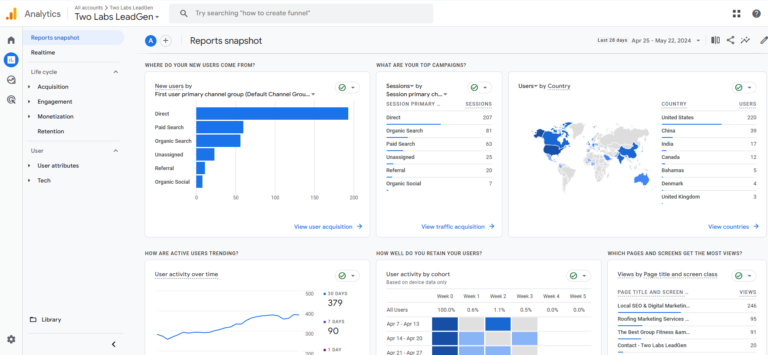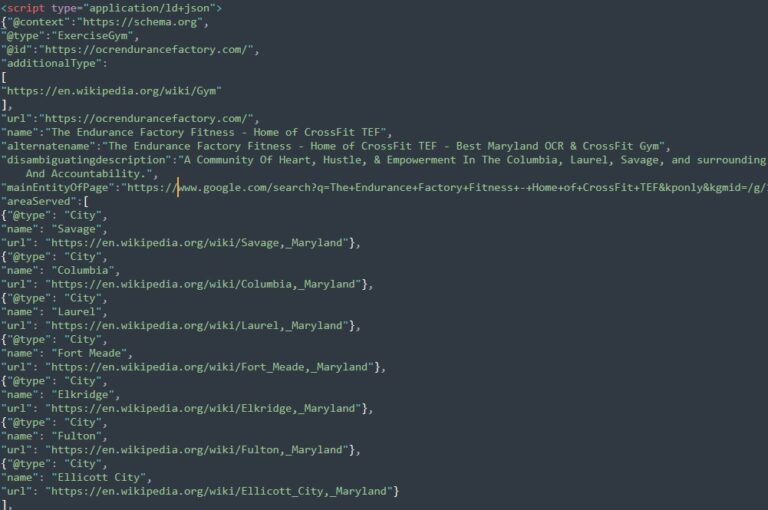Table of Contents
ToggleIn the ever-changing landscape of digital marketing, it has become imperative for businesses to adopt a comprehensive and multifaceted approach to their SEO strategy in order to stay ahead of the competition. A holistic SEO strategy goes beyond simply optimizing for keywords and encompasses a wide range of tactics that are aimed at improving overall website performance, user experience, and search engine visibility. This includes technical optimizations, content creation, link building, and social media integration, among other aspects. By taking a holistic approach, businesses can ensure that they are positioned for long-term success in the increasingly competitive online marketplace. This blog post will delve into the various components of a holistic SEO strategy and explain why it is crucial for businesses looking to maximize their online presence.
Key Takeaways:
- Comprehensive approach: A holistic SEO strategy encompasses all aspects of digital marketing including content creation, technical optimization, and link building to provide a well-rounded approach to improving search engine rankings.
- User-focused: Holistic SEO focuses on providing a positive user experience by delivering valuable content that satisfies user intent and needs, ultimately driving organic traffic and engagement.
- Long-term sustainability: By considering the bigger picture and focusing on creating quality content and building reputable backlinks, a holistic SEO strategy sets the foundation for sustainable organic growth and success.
Core Components of a Holistic SEO Strategy
While many may think of SEO as simply stuffing keywords into content, a holistic SEO strategy goes beyond that. It involves a comprehensive approach that takes into account various aspects of a website to improve its visibility and ranking on search engines.
Technical Optimization
On the technical side, a holistic SEO strategy involves optimizing the website’s structure, speed, and mobile-friendliness. This includes fixing any crawl errors, improving site speed, and ensuring that the site is responsive and accessible on all devices. Additionally, it involves optimizing meta tags, and schema markup, and creating a clear site structure that helps search engines understand the content and purpose of the website.
Content Strategy and Quality
Strategy is also a crucial component of holistic SEO. It involves creating high-quality, relevant, and valuable content for the target audience. This includes optimizing content for keywords, providing useful information, and ensuring that the content is engaging and shareable. Quality content not only helps improve search engine rankings but also enhances user experience, which in turn can lead to higher conversion rates and customer retention.
It is important to note that content strategy and quality play a major role in holistic SEO, as search engines prioritize websites with valuable and relevant content. Focusing on creating quality content can lead to higher organic traffic, better engagement, and ultimately, more conversions and revenue for the business.
The most important aspects of a holistic SEO strategy include technical optimization, content strategy, and quality. Ignoring these components can be dangerous for a website’s visibility and ranking on search engines. However, implementing a comprehensive approach that addresses these aspects can lead to strong, long-term results, including improved visibility, higher organic traffic, and better user engagement. With the right strategy and execution, a holistic SEO approach can be incredibly positive for a website’s overall performance and success.
User Experience and Holistic SEO
Search engines like Google prioritize websites that provide a positive user experience, so it’s essential to focus on creating a site that is both user-friendly and optimized for search engines.
With user experience in mind, it’s important to consider factors such as mobile optimization and responsiveness, as well as site speed and performance. These elements not only impact how users interact with your site but also play a crucial role in determining your site’s search engine rankings.
Mobile Optimization and Responsiveness
The rise of mobile usage means that more people are accessing the internet from their smartphones and tablets. The evolving landscape of technology demands that websites be optimized to provide a seamless experience across all devices. The lack of mobile optimization can result in a poor user experience, leading to higher bounce rates and lower search engine rankings.
Site Speed and Performance
Any website that loads slowly or experiences performance issues is at risk of losing users and potential customers. It is crucial to prioritize site speed and performance to ensure that users can access your content quickly and efficiently. Search engines also take site speed into account when determining rankings, so a slow site can have a negative impact on SEO. Implementing optimizations such as image compression, browser caching, and minimizing render-blocking resources can significantly improve site speed and performance.
Social Signals and Authority Building
Not only does a holistic SEO strategy involve optimizing your website for search engines, but it also encompasses building authority and trust through social signals. Social signals, such as likes, shares, and comments on social media platforms, play a crucial role in improving your website’s SEO and overall online presence.
The Role of Social Media in SEO
One of the key aspects of social signals in SEO is the impact of social media on search engine rankings. Search engines like Google take into account the social engagement and authority of your brand on social media platforms. The more your content is shared and engaged with on social media, the more likely it is to rank higher in search results.
Building Brand Authority and Trust
Authority building is an essential component of a holistic SEO strategy. *Authority* is established through consistent, high-quality content, positive user engagement, and a strong online presence across various platforms. Trust, on the other hand, is built through transparent and authentic interactions with your audience, as well as positive reviews and feedback from customers.
This approach not only improves your website’s visibility and rankings but also fosters a strong connection with your target audience, leading to increased brand awareness and loyalty.
Measuring Success and Adapting
Unlike traditional SEO strategies, a holistic approach requires ongoing measurement of success and the ability to adapt based on the data. This means constantly monitoring key performance indicators (KPIs) and adjusting strategies as needed to ensure continued improvement.
Key Performance Indicators (KPIs)
Adapting a holistic SEO strategy relies heavily on identifying and tracking key performance indicators (KPIs) related to website traffic, conversion rates, keyword rankings, and user engagement. These metrics provide valuable insights into the effectiveness of your SEO efforts and help determine where adjustments need to be made.
Another critical aspect of adapting a holistic SEO strategy is keeping a close eye on analytics and making strategic changes based on the data. Indicators such as bounce rates, click-through rates, and average time on page offer valuable insight into the performance of your website and can guide adjustments to content, user experience, and overall SEO tactics. By utilizing this data to adapt and refine your strategies, you can ensure that your SEO efforts continue to drive positive results.
Performance indicators like organic traffic, conversion rates, and keyword rankings are crucial for evaluating the effectiveness of your SEO efforts. By regularly analyzing these metrics and making strategic adjustments, you can ensure that your holistic SEO strategy remains on track to achieve long-term success.
Conclusion
By integrating all aspects of digital marketing, from content creation to technical SEO, a holistic approach ensures that every element works together to achieve the best results. In today’s competitive online landscape, businesses must understand and implement a comprehensive holistic SEO strategy that considers both on-page and off-page factors. By focusing on the user experience, leveraging high-quality content, and optimizing for mobile and local search, businesses can create a strong foundation for long-term success. Ultimately, a holistic SEO strategy not only improves a website’s search engine rankings but also enhances the overall online visibility and credibility of a brand.
FAQ
Q: What is a holistic SEO strategy?
A: A holistic SEO strategy is a comprehensive approach to search engine optimization that focuses on improving a website’s visibility and ranking in search engine results pages (SERPs) by taking into account all aspects of a website, including technical optimization, on-page content, off-page factors, and user experience. It aims to create a seamless and user-friendly experience for both search engines and website visitors, while also considering the broader marketing and business goals of the company.
Q: Why is a holistic SEO strategy important?
A: A holistic SEO strategy is important because it takes into consideration the various factors that can impact a website’s search engine performance. By addressing technical issues, creating high-quality content, building authoritative backlinks, and ensuring a positive user experience, a holistic approach can lead to better rankings, increased organic traffic, and a stronger overall online presence. It also aligns SEO efforts with broader business objectives, enhancing the effectiveness and impact of digital marketing initiatives.
Q: What are the key components of a holistic SEO strategy?
A: The key components of a holistic SEO strategy include technical SEO, on-page optimization, content marketing, link building, and user experience. Technical SEO involves optimizing website structure, load times, and crawlability for search engines. On-page optimization focuses on optimizing content, meta tags, and internal linking. Content marketing involves creating and promoting high-quality, relevant content. Link building aims to acquire authoritative backlinks to boost website authority. User experience considers the design, navigation, and overall satisfaction of website visitors. By integrating and prioritizing these components, a holistic SEO strategy aims to achieve sustainable and long-term success in search engine rankings.












